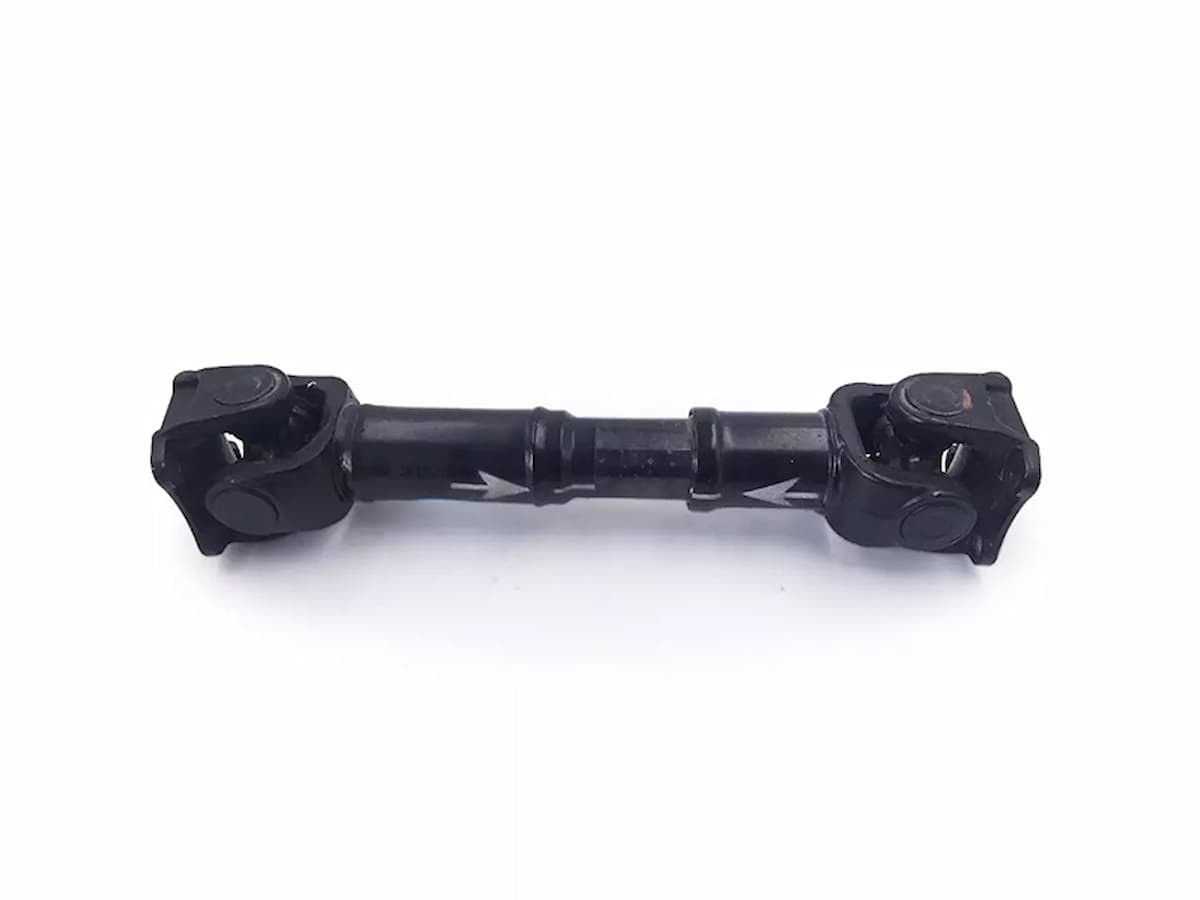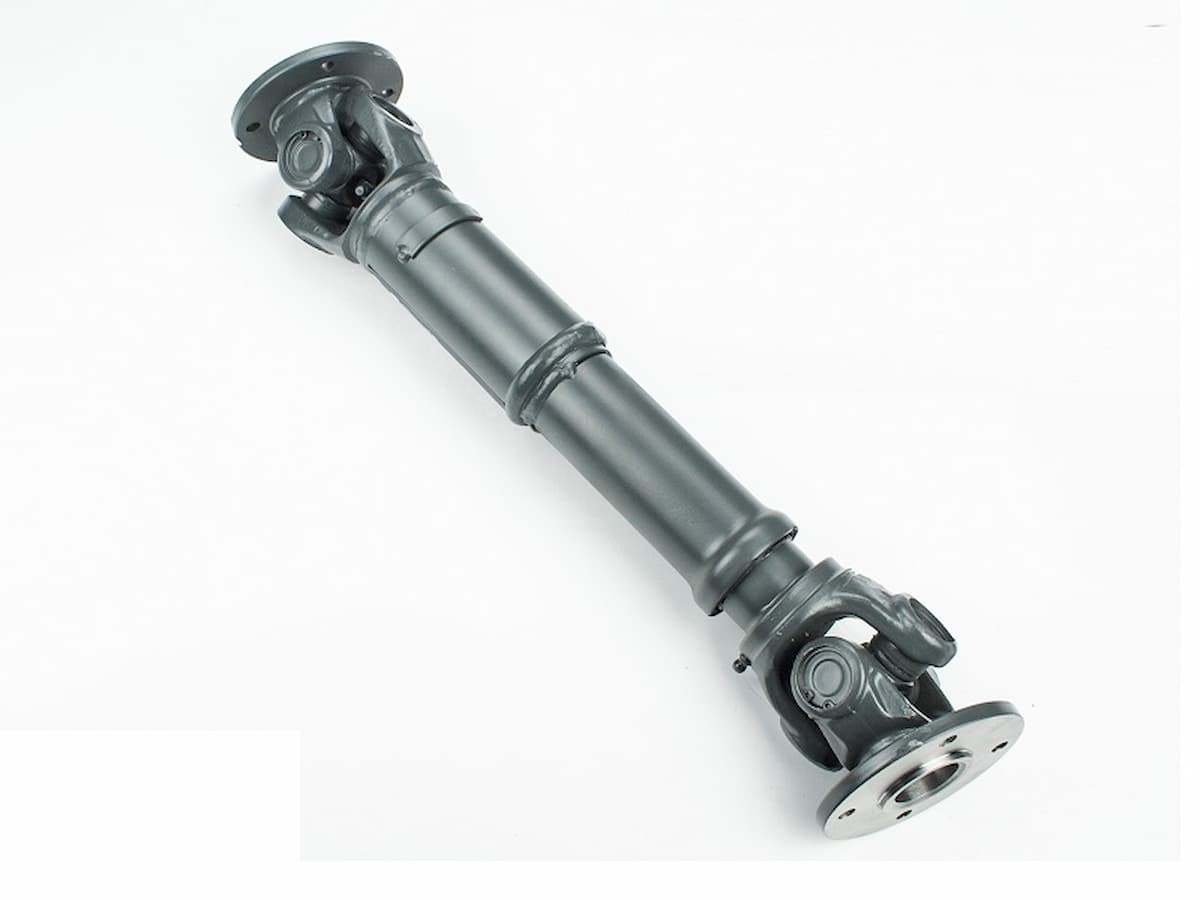A truck driveline is a vital part of the drivetrain, responsible for transmitting torque from the gearbox to the rear axle or differential, enabling the vehicle to move. Understanding the structure, operating principles, and classification of drivelines helps you operate and maintain your truck more effectively.
 Truck driveline structure
Truck driveline structure
The driveline, also known as a driveshaft or Cardan shaft, has a hollow tube structure combined with joints and slip splines. This component is widely used on trucks, boats, and aircraft to transmit power from one end of the vehicle to the other.
Characteristics of Truck Drivelines
Truck drivelines operate on the principle of force transmission, with notable features:
- Transmitting force from the gearbox output shaft to the differential without consuming energy or changing engine RPM.
- Transmitting power at different heights, for example, the gearbox output shaft is 1 meter above the ground, and the differential is 0.5 meters above the ground.
- Automatically adjusting when the vehicle drives over obstacles.
 Driveline transmitting force without electricity
Driveline transmitting force without electricity
The Important Role of Truck Drivelines
The driveline plays a crucial role in the operation of a truck:
- Power Transmission: Transmitting force from one shaft to another with continuously changing angles of intersection while the vehicle is moving, connecting shafts whose centers are not on the same straight line.
- Torque Transmission: By connecting the shafts, the driveline transmits torque and force to all the wheels, helping the vehicle to move.
- Facilitates Disassembly and Assembly: Drivelines are designed to facilitate the easy disassembly and assembly of power transmission components.
Detailed Structure of a Truck Driveline
Despite its important and complex role, the driveline structure is relatively simple, including:
Main Shaft
The main shaft is a hollow steel tube made of carbon, strong enough to resist bending and twisting. Previously, the main shaft typically had two joints at both ends, but to reduce vibrations at high speeds, manufacturers now use main shafts with three joints. Three-joint main shafts are shorter in length, and the bending due to imbalance is also shorter, minimizing vibrations at high-speed ranges.
 Main shaft and joints
Main shaft and joints
Cardan Joints
Cardan joints connect short shafts together to form a complete driveshaft. The job of the joint is to compensate for angular changes arising from the change in position between the differential and gearbox, helping to ensure smooth power transmission.
Operating Principle
The operating principle of the driveline is based on the method of force transmission, transmitting torque between power transmission units that are far apart. The gearbox and axle always change position and distance, and the tubular driveline will route hydraulics and cables to the necessary locations for the vehicle to move. This component not only transmits force but also transmits torque when the parts mesh together, ensuring the vehicle operates safely and reducing the risk of breakage.
Types of Truck Drivelines
Drivelines are classified in various ways:
- By Characteristics: Constant velocity joints (used in confined spaces, simple structure) and non-constant velocity joints (large torque change angle, simple structure, low cost).
- By Structure: Hollow shafts (lightweight, high critical speed, can change length) and solid shafts (compact size, cannot change length, critical speed not high).
- By Number of Joints: Single type (only one joint, used for constant velocity joints) and double type (transmitting torque between two units with a large distance, used for non-constant velocity joints).
 Driveline classification by structure
Driveline classification by structure
A truck driveline is an important component that needs to be understood and maintained regularly to ensure stable and safe vehicle operation.

